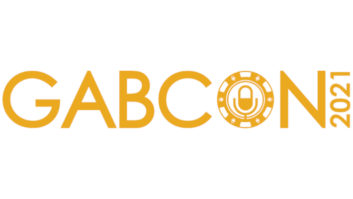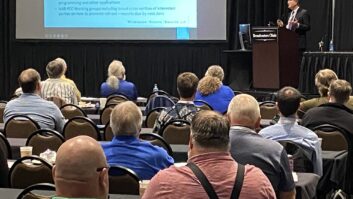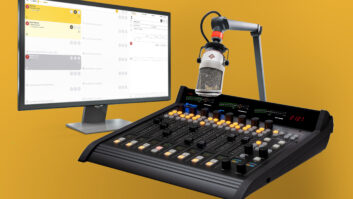In his address to the Radio Show in Austin in September, FCC Chairman Ajit Pai promised us a technical rulemaking to reduce the regulatory and financial burden on licensees of AM directional antennas. He has since delivered on that promise.
The rulemaking provides for several things, all part of the overall AM revitalization proceeding.
PARTIAL PROOFS
First, for conventionally-proofed arrays, partial proof requirements have been reduced to monitored radials only. The existing minimum of eight measurements per radial will remain. This is a welcome change.
Conventional full proofs generally require a radial in each null and lobe, and fatter lobes sometimes need tangent radials to establish the width of the lobe. When doing a partial proof, making measurements on all those lobe and tangent radials has very limited value. If the nulls are in the right places and have the correct depth, it’s almost a certainty that the rest of the pattern is correct. This change in the partial proof rule will greatly simplify the process, making it a one-day (or less!) activity in many cases.
MOM PROOFS
No doubt about it, method-of-moments (MoM) proofing has been a huge success since its adoption in 2009. For those who have taken advantage of this option, the worries of seasonal variation in monitor point field strengths and reradiation largely have gone away. However, we have found that MoM-proofed arrays come with their own set of aggravations.
The MoM rules require that the sample system of an array licensed thereunder must be recertified every two years. In the time that we have been MoM proofing and recertifying directional arrays, we have learned that there is generally no issue with the sample system that doesn’t show up on the antenna monitor beforehand. Every recertification I have done has shown the sample system to be in perfect health.
If that’s the case, why do we need to do a biannual recertification? The answer, contained in the rulemaking, is that we don’t; there is no benefit, and in fact, the process of disconnecting and removing sample devices for calibration checks tends to create problems that would otherwise not exist.
The rule change eliminates the need for doing biannual sample system recertifications altogether, with the provision that if a sample system component is replaced or repaired, that part of the sample system must be recertified.
In my experience, the biggest pain associated with biannual recertifications has been the reference field strength measurements. My company has one array with 16 radials and thus 48 (!!!) measurements that must be made every two years. The elimination of the biannual recertification requirement takes care of that.
There is a rule change regarding reference field strength measurements, however. The measurements must be made only the first time a pattern is licensed under the MoM rules. Subsequent license application filings will not require the measurements to be repeated as long as there is no change in the pattern or physical facilities.
The 2009 MoM rules required a surveyor’s certification of array geometry. The FCC subsequently issued a public notice clarifying this requirement to exempt arrays that were prior licensed using a conventional proof, provided that there was no change to the array or pattern. The rulemaking codifies that exemption and broadens it to include “towers that are part of an authorized AM array … provided that the tower geometry of the array is not being modified and that no new towers are being added to the array.” This will save those considering making the change to MoM proofing the cost of an as-built survey in most cases.
The FCC also clarified a section of the MoM rules dealing with base region capacitance, which limited the total capacitive reactance in the base region model to no less than five times the magnitude of the tower base impedance. Under the revised rule, this “five times” requirement only applies when the total capacitance used to model base region effects exceeds 250 pF and when base current sampling is used.
All this is good news for AM directional licensees. It is my hope that doing away with the cost and hassle of biannual sample system recertifications and, in most cases, the expense of as-built surveys, will encourage many more licensees to make the move to MoM licensing. That will not only make things easier on them, removing the possibility of getting dinged for an above-the-limit monitor point, but it will help spectrum neighbors as well, insuring that directional patterns are right.
There are still a number of outstanding issues in the AM revitalization proceeding, and these changes are, to some degree, more low-hanging fruit. Still, every bit helps, and I applaud the chairman and the commission for moving on these items.
WHAT IS AM REVITALIZATION?
It has been interesting reading some of the reader responses and opinions on the FCC’s AM revitalization initiative in recent months. The views are all over the place, but by and large, the radio community seems to see AM revitalization — and the AM-on-FM translator windows in particular — as a good thing.
FM translators provide AM stations with a 24-hour signal in wideband stereo, with RDS if the licensees choose to implement it. The very fact that translators are on the FM band provides access to younger listeners that would most likely not otherwise tune in. AM? Are you kidding?
There’s no doubt that translator coverage, in most cases, doesn’t come close to reproducing the metro-grade coverage of the parent AM station. Most of the time, the translator provides not much more than a pocket of coverage within the AM station’s coverage area. But if the translator is strategically sited, that limited coverage can be really meaningful.
Is there value in that? Over the summer, I heard a station manager say that just having the FM signal, limited as it might be, resulted in airtime buys that would not have happened otherwise. Yes, I’d say there is value in that. Advertisers — and listeners — like FM signals.
On the other side is the opinion that providing AM stations with FM translators does not represent “AM revitalization” at all. How, they ask, does that help the AM signal? They say that real AM revitalization has to take place on the AM band, and that adding FM signals to AM stations is nothing more than a Band-Aid.
I’ve heard the argument made that giving AM stations FM translators may have the opposite effect — listeners will tune to the FM signal to the exclusion of the AM signal, and licensees will give priority to the FM while ignoring the low-listenership AM. The AM signal then suffers, further contributing to the malaise of AM.
So which side is right? My opinion is that FM translators are good for the AM medium because they have the potential to reenergize many sleepy or even dying AM stations. So, in the sense that an FM translator can revitalize a dying AM station, that definitely represents “AM revitalization.”
That being said, we do have some work to do in the band, and there are a number of proposals in that regard on the table in the AM revitalization proceeding.
The primary technical issue for AM, in my view, is signal-to-noise ratio, and to fix it we need to either increase the signal or reduce the noise, or do some of both.
While efforts to reduce manmade noise are good and worthwhile, I have my doubts that anything meaningful can be done at this late date. There are too many noisemakers already out there, and while the FCC can in some measure restrict the manufacture and sale of such devices, removing those already out there is all but impossible. Such will happen only through attrition over a long period of time, and I don’t think AM has that much time.
Which leaves the one thing we can do: revise the AM technical rules to permit power increases by many AM stations. As I said, there are a number of proposals on the table, including raising the value of the protected contour.
There would be winners and losers in any such rule change. That’s unavoidable. Many AM stations eligible for an upgrade under a new set of rules likely could simply not afford it. Those stations might then well be clobbered by increased interference from those spectrum neighbors that could afford the upgrade. That’s arguably a step in the wrong direction.
Whatever path the FCC eventually takes in this regard should be one that results in the greater good of the overall AM medium. Figuring that out isn’t going to be easy.
As we wait to find out what else the FCC will do in this initiative, I would encourage AM licensees that are fortunate enough to have FM translator signals to enjoy the benefit of those signals, but to keep their AM signals as good as they can make them.
Cris Alexander, CPBE, AMD, DRB, is director of engineering of Crawford Broadcasting Co.












